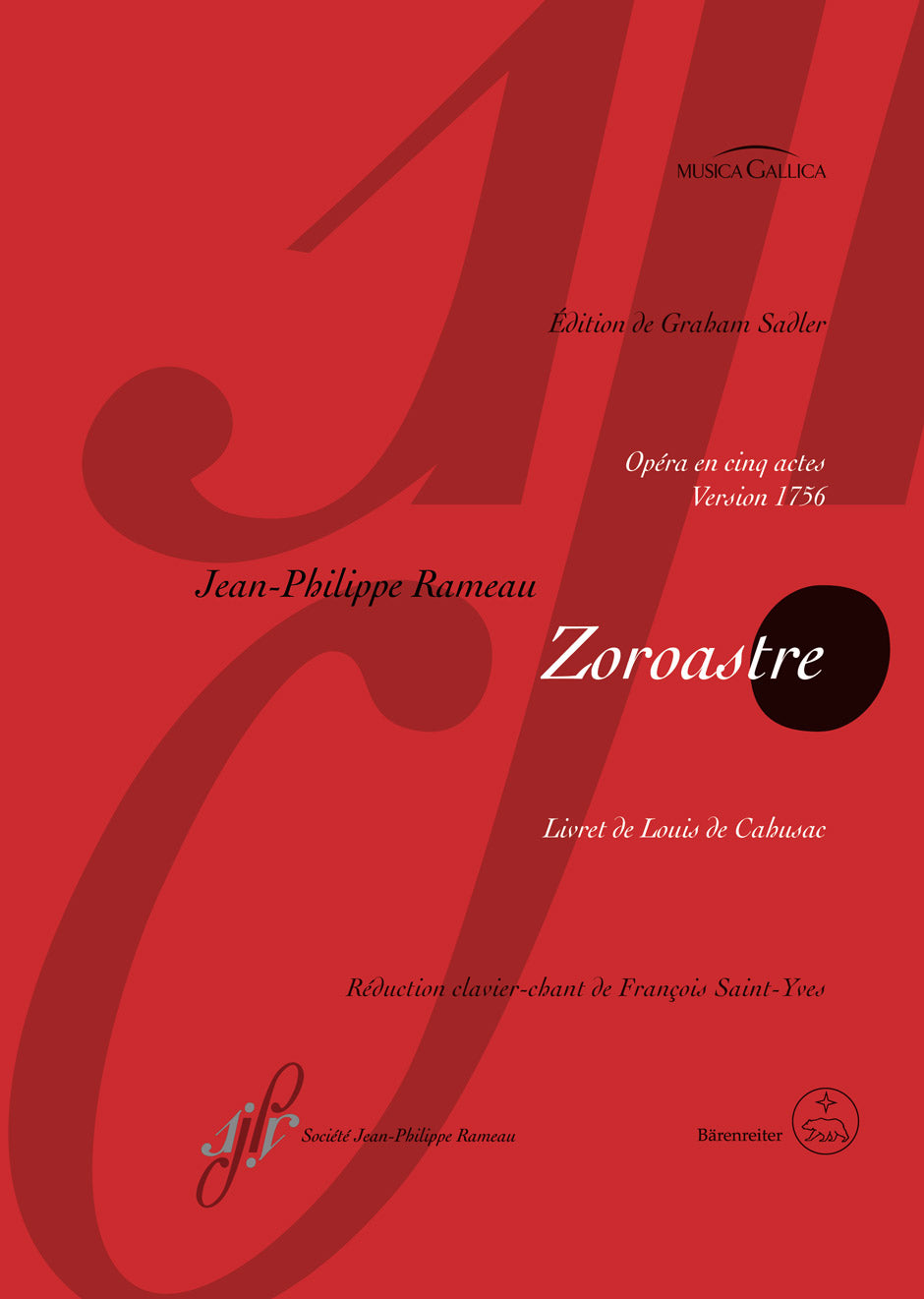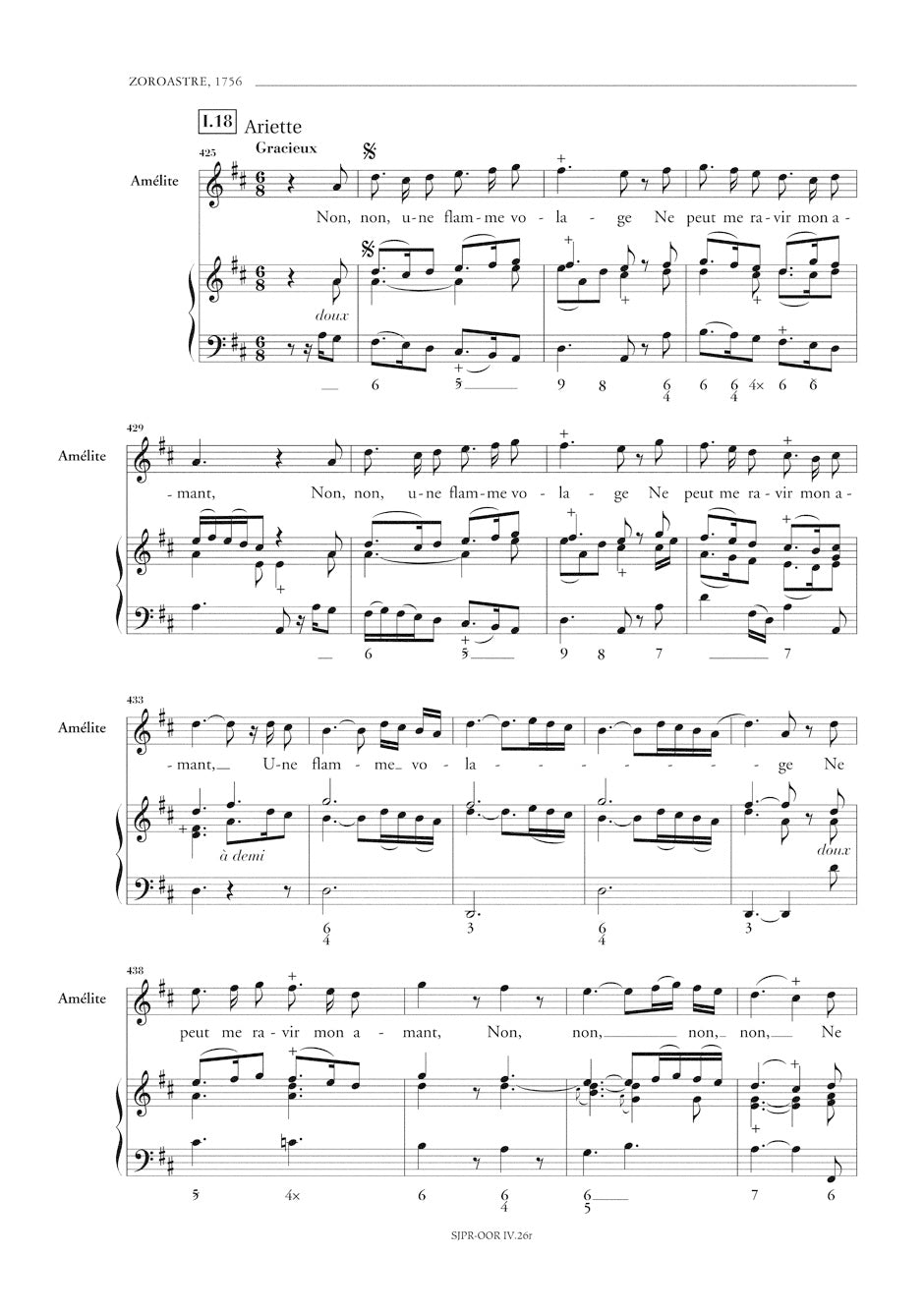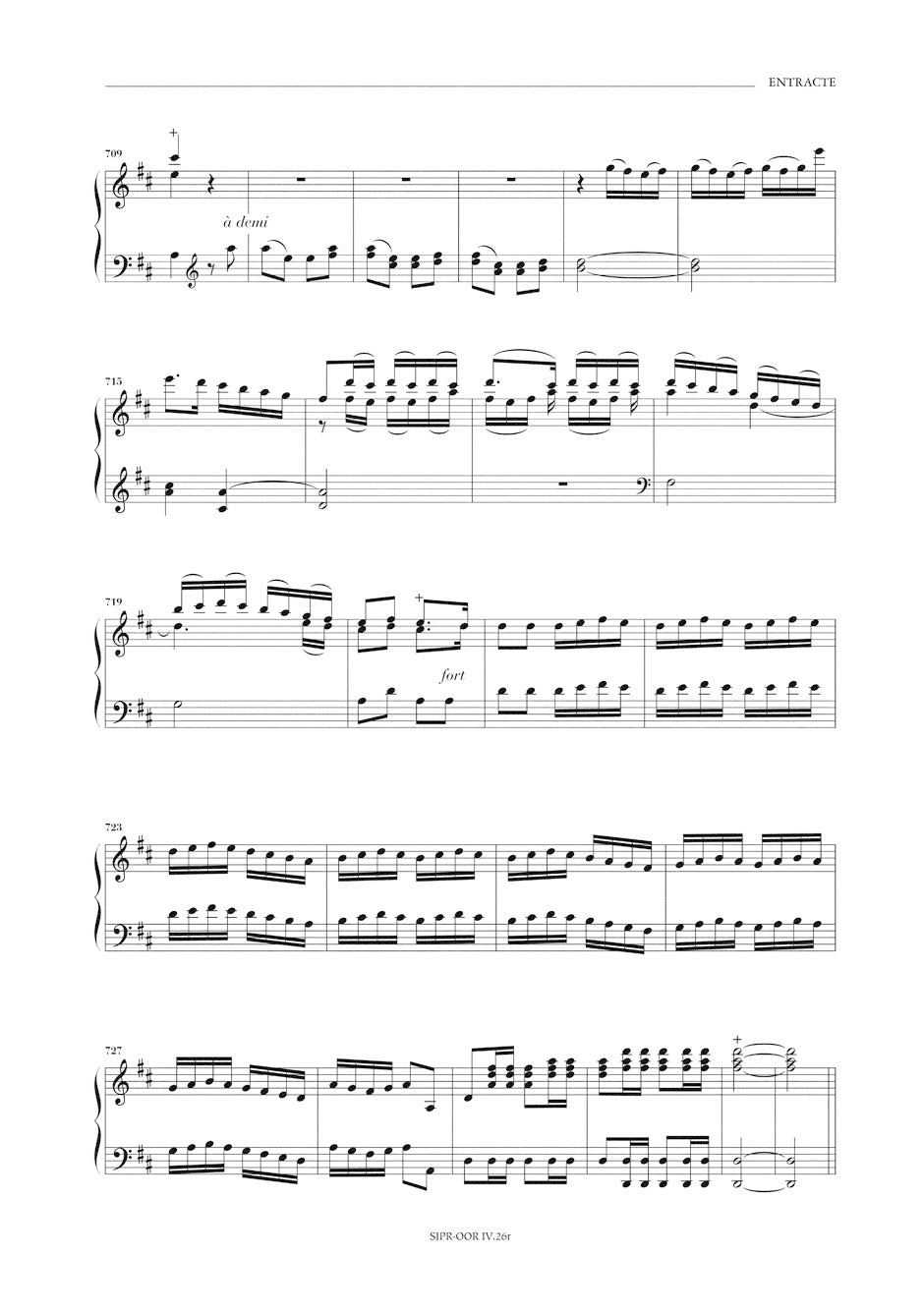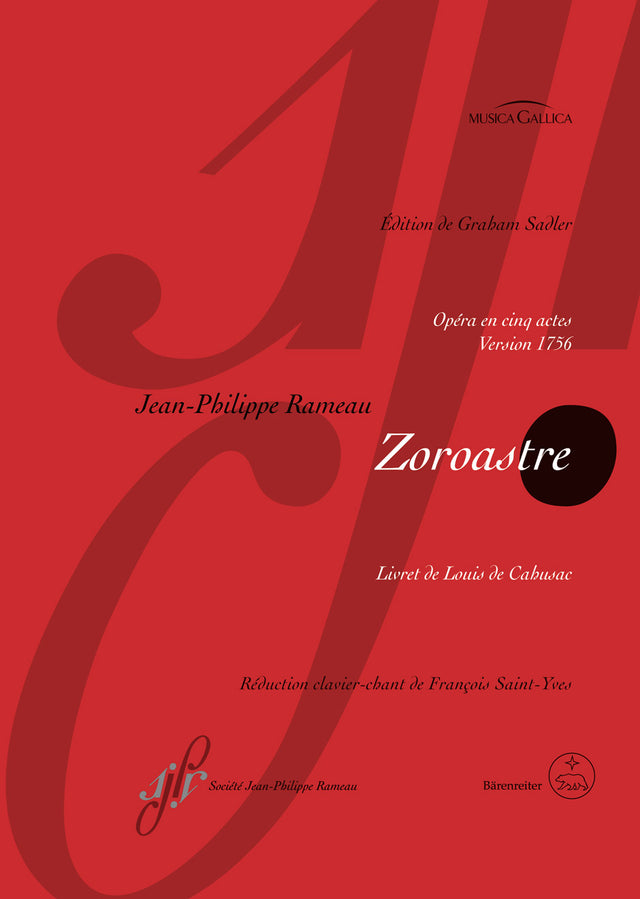Rameau: Zoroastre
Version from 1756
Expected to ship in about a week.
- Composer: Jean-Philippe Rameau (1683-1764)
- Format: Vocal Score
- Instrumentation: Opera
- Work: Zoroastre, RCT 62
- ISMN:
- Size: 7.5 x 10.6 inches
- Pages: 298
- Urtext / Critical Edition
Description
Richer than ever – Rameau's "Zoroastre" in the version of 1756
Rameau's revised version of his opera "Zoroastre", which could be heard and seen between 20 January 1756 and 26 March 1757 at the Académie royale de musique, was favourably received. Also from today's point of view the work profits dramaturgically from many of the changes and seems altogether richer and more tightly woven than the original of 1749. The subject matter of the libretto, derived from Ancient Persian sources, is timeless: the struggle between good and bad. The good is embodied by the religious reformer Zoroastre, a representative of the supreme light being Orosmade. He is opposed by the ambitious magician Abramane who serves Ariman, the spirit of the dark.
The opera includes some of Rameau's most ecstatic and spiritual musical numbers, such as the episode of sun worship in Act 3 with the sublime "Hymne à la Lumière", which, for unknown reasons, was not integrated in the revision of 1756. It is therefore included in Appendix 3 of this Bärenreiter edition. Incidentally, with "Zoroastre" the prologue, which had been customary since the beginnings of French opera in the 1670s, was abandoned. Instead Rameau was the first to introduce an overture which set the scene for the entire drama and thereby anticipated Gluck's opera reform by many years.
Publishers use a lot of words to describe what they sell, and we know it can be confusing. We've tried to be as clear as possible to make sure you get exactly what you are looking for. Below are descriptions of the terms that we use to describe the various formats that music often comes in.
Choral Score
A score for vocalists that only contains the vocal lines. The instrumental parts are not there for reference. Generally, cheaper than a vocal score and requires multiple copies for purchase.
Facsimile
Reproductions of the original hand-written scores from the composer.
Full Score
For ensemble music, this indicates that the edition contains all parts on a single system (there are not separate parts for each player). In larger ensembles, this is for the conductor.
Hardcover
Hardbound. Generally either linen-covered or half-leather.
Orchestral Parts
Similar to a wind set, this is a collection of parts. In the case of strings, the numbers listed are the number of copies included, though generally these are available individually (often with minimum quantities required).
Paperback
When publishers offer multiple bindings (e.g. hardcover) or study scores, this is the "standard" version. If you're planning to play the music, this is probably what you want.
Performance / Playing Score
A score of the music containing all parts on one system, intended for players to share. There are not separate parts for each player.
Set of Parts
For ensemble music, this indicates that there are separate individual parts for each player.
Solo Part with Piano Reduction
For solo pieces with orchestra, this is a version that contains a piano reduction of the orchestra parts. For piano pieces, two copies are typically needed for performance.
Study Score
A small (think choral size) copy of the complete score meant for studying, and not playing. They make great add-ons when learning concertos and small chamber works.
Vocal Score
A score prepared for vocalists that includes the piano/organ part or a reduction of the instrumental parts.
Wind Set
For orchestral music, this is a collection of wind and percussion parts. The specific quantities of each instrument are notated.
With Audio
In addition to the printed music, the edition contains recordings of the pieces. This may be an included CD, or access to files on the internet.
With / Without Fingering (Markings)
Some publishers prepare two copies - a pure Urtext edition that includes no fingering (or bowing) suggestions and a lightly edited version that includes a minimal number of editorial markings.





